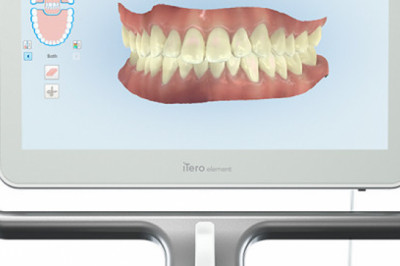views

The “Biopharmaceutical Contract Manufacturing Market 2019 – 2030
Key Inclusions
§ A detailed review of the overall landscape of thebiopharmaceutical contract manufacturing market, featuring a comprehensive listof active CMOs and detailed analysis of the manufacturing service providersbased on a number of parameters, such as scale of operation (preclinical,clinical and commercial), type of biologics manufactured (peptides / proteins,antibodies, vaccines, cell therapies, gene therapies, antibody drug conjugates,vectors, biosimilars, nucleic acids and others), type of expression systemsused (mammalian, microbial and others), year of establishment, employee size,geographical location of the CMO, number of manufacturing facilities, as wellas the location of these facilities, GMP compliance, affiliations to regulatoryagencies, type of bioreactors used (single-use bioreactors and stainless steelbioreactors), mode of operation of bioreactors (batch, fed-batch and perfusion)and bioprocessing capacity.
§ Elaborate profiles of key players that have a diverse rangeof capabilities for the development, manufacturing and packaging of biologics.Each profile provides an overview of the company, its financial performance (ifavailable), information related to its service portfolio, manufacturingfacilities, and details on partnerships, recent developments (expansions), aswell as a comprehensive future outlook.
§ A detailed discussion on the key enablers in this domain,including certain niche product classes, such as antibody drug conjugates(ADCs), bispecific antibodies, cell therapies, gene therapies and viralvectors, which are likely to have a significant impact on the growth of thecontract services market.
§ A case study on the growing global biosimilars market,highlighting the opportunities for biopharmaceutical CMOs and CDMOs.
§ A case study comparing the key characteristics of largemolecule and small molecule drugs, along with details on the various stepsinvolved in their respective manufacturing processes.
§ A discussion on challenges related to in-housemanufacturing, featuring a brief overview of the various parameters that a drug/ therapy developer may need to take into consideration while deciding whetherto manufacture its products in-house or outsource.
§ An analysis of the recent collaborations (signed since2013) focused on the contract manufacturing of biologics; the analysis is basedon various parameters, such as the year in which the agreement was signed, typeof agreement, focus area and type of biologics.
§ A detailed analysis of the various mergers and acquisitionsthat have taken place in this domain, highlighting the trend in the number ofcompanies acquired between 2013-2018, along with the geographical distributionof this activity. The analysis also depicts the relationship between importantdeal multiples based on the revenue, number of employees and experience of theacquired company.
§ An analysis on the recent trends within biopharmaceuticalcontract manufacturing industry, highlighting various facility and capabilityexpansions. In addition, it provides information on the technology advancementsrelated to biomanufacturing.
§ A detailed capacity analysis, taking into consideration theindividual development and manufacturing capacities of various stakeholders(small-sized, mid-sized, large and very large CMOs / CDMOs) in the market,using data from both secondary and primary research. The study examines thedistribution of global biopharmaceutical manufacturing capacity by scale ofoperation (preclinical / clinical, commercial), size of company (small-sized,mid-sized, large and very large), and geography (North America (the US andCanada), Europe (Italy, Germany, France, Spain, the UK and rest of Europe),Asia and Middle East (China, India, Japan, South Korea and rest of the Asia andMiddle East), and rest of the world (including Australia).
§ An informed estimate of the annual demand for biologics,taking into account the top 20 biologics, based on a various relevantparameter, such as target patient population, dosing frequency and dosestrength of the abovementioned products.
§ A discussion on affiliated trends, key drivers andchallenges, under a comprehensive SWOT framework, which are likely to impactthe industry’s evolution, including a Harvey ball analysis, highlighting therelative effect of each SWOT parameter on the overall pharmaceutical industry.
§ A survey analysis featuring inputs solicited from variousexperts who are directly / indirectly involved in providing CMO services tomedical device developers.
The report also features thelikely distribution of the current and forecasted opportunity across importantmarket segments, mentioned below:
§ Commonly OutsourcedBusiness Operations
§ Active PharmaceuticalIngredients (API)
§ Finished Dosage Formulations(FDF)
§ Types of ExpressionSystem
§ Mammalian
§ Microbial
§ Others
§ Company Size
§ Small
§ Mid-Sized
§ Large and Very Large
§ Scale of Operation
§ Preclinical
§ Clinical
§ Commercial
§ Key GeographicalRegion
§ North America
§ Europe
§ Asia-Pacific
To request samplepages, please visit this link
Key QuestionsAnswered
§ Who are the keymanufacturers (industry / non-industry) of cell-based therapies, across theworld?
§ What is the globaldemand for biologics-based therapies?
§ What are the majorrecent developments (such as partnerships and expansions) in this industry?
§ What kind of partnershipmodels are commonly adopted by stakeholders in this domain?
§ What is the current, installedcontract manufacturing capacity for biologics?
§ How is the current and future market opportunity likely tobe distributed across key market segments?
You may also be interested in the followingtitles:
1. CellTherapy Manufacturing Market (3rd Edition), 2019-2030
2. AntibodyContract Manufacturing Market, 2020-2030
3. China Biopharmaceutical ContractManufacturing Market, 2020-2030
4. PeptideTherapeutics: Contract API Manufacturing Market, 2020-2030
Contact Us
Gaurav Chaudhary
+1 (415) 800 3415
gaurav.chaudhary@rootsanalysis.com











